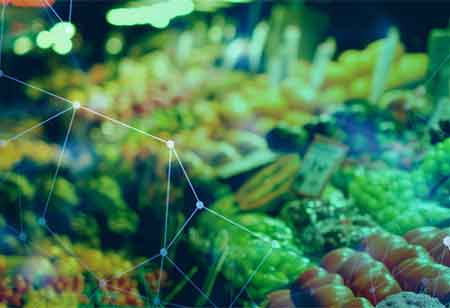THANK YOU FOR SUBSCRIBING
Be first to read the latest tech news, Industry Leader's Insights, and CIO interviews of medium and large enterprises exclusively from Food and Beverage Tech Review
The Rise of Delivery Apps and Their Influence on Dining
Delivery apps have transformed dining by enhancing convenience for customers and boosting restaurant sales while prompting shifts in dining culture and sustainability practices.

By
Food and Beverages Tech Review | Thursday, November 07, 2024
Stay ahead of the industry with exclusive feature stories on the top companies, expert insights and the latest news delivered straight to your inbox. Subscribe today.
Delivery apps have transformed dining by enhancing convenience for customers and boosting restaurant sales while prompting shifts in dining culture and sustainability practices.
FREMONT CA: The rise of delivery apps has dramatically transformed the dining landscape, reshaping how consumers engage with restaurants and food services. With the convenience of ordering meals at the touch of a button, these platforms have changed consumer behaviour and altered the food industry's trends. As more people embrace the convenience of delivery, restaurants have had to adapt their business models, often expanding their menus for takeout and investing in technology to optimise order fulfilment. Additionally, the proliferation of delivery apps has led to increased competition among restaurants, prompting them to innovate in quality, packaging, and promotional strategies. This shift towards digital dining solutions has enhanced the consumer experience and raised questions about sustainability, food quality, and the future of traditional dining establishments, marking a significant evolution in food and hospitality.
Advantages of Food Delivery Apps for Customers
Food delivery apps provide unparalleled accessibility and convenience, allowing customers to effortlessly order from a wide variety of cuisines without the need to travel or wait in long lines. These apps save time by streamlining the ordering process, enabling users to browse menus, place orders, and make payments quickly. At the same time, real-time tracking enhances efficiency by informing customers of the arrival time of their food. They connect users with a diverse range of restaurants, expanding their culinary options and encouraging exploring new dining experiences. The user-friendly interfaces enhance customer satisfaction through features like order tracking, digital payments, and responsive customer support.
Additionally, customisation options allow for tailored orders that meet individual dietary preferences. Discounts, promotions, and loyalty programs further enrich the dining experience, making it more affordable. Many apps also prioritise sustainability by offering eco-friendly packaging and promoting restaurants with environmentally conscious practices, aligning with the values of eco-aware consumers.
Advantages of Food Delivery Apps for Restaurants
Enhanced Reach and Visibility: Food delivery apps have significantly transformed the restaurant industry by broadening reach and visibility. By partnering with these platforms, restaurants can tap into a larger audience beyond their immediate locality, which is especially beneficial for small and local establishments aiming to grow their customer base. Additionally, being listed on popular food delivery services increases a restaurant's online presence, making it easier for potential customers to discover their offerings.
Increased Sales and Revenue: Another significant impact of food delivery apps is the boost in sales and revenue. These platforms can lead to a substantial increase in order volumes, allowing restaurants to enhance their financial performance. Furthermore, many apps include features that promote upselling during ordering, suggesting additional items such as sides, drinks, or desserts. This capability helps raise the average order value and contributes to overall profitability.
Expansion of Delivery Services: Food delivery apps enable restaurants to expand their delivery services without the need to manage their delivery fleet. By leveraging the logistics offered by these platforms, restaurants can reduce operational costs and complexities associated with in-house delivery. Additionally, these apps allow restaurants to serve customers in previously unreachable areas, further extending their market and customer reach.
Customer Data and Insights: The data and insights provided by food delivery apps are invaluable for restaurants. These platforms offer behavioural analytics that reveal customer preferences, ordering habits, and feedback. This information enables restaurants to customise their menus and marketing strategies, enhancing customer service. Moreover, by analysing customer data, restaurants can develop targeted promotions and personalised offers that resonate with their audience, ultimately driving repeat business.
Shift in Dining Culture: The rise of food delivery has led to a cultural shift in dining habits. The convenience offered by food delivery apps has made dining at home increasingly popular, prompting restaurants to adapt their offerings to cater to home dining experiences. This shift has also contributed to a growing demand for casual and comfort food, influencing menu development and the overall concept of many restaurants as they respond to changing consumer preferences.
As the industry continues to adapt to this digital transformation, the focus on sustainability and quality will likely become even more pronounced, influencing future trends in food and hospitality. Ultimately, integrating delivery apps into the dining ecosystem marks a pivotal moment highlighting the evolving relationship between consumers and restaurants, signalling a new era of convenience, innovation, and culinary exploration.
I agree We use cookies on this website to enhance your user experience. By clicking any link on this page you are giving your consent for us to set cookies. More info







